Many people’s lives have been turned upside down due to the Coronavirus. As the “quarantine” continues, the impact on our lives can create chaos. Putting more structure in your life might help. Being constantly at home with your spouse, kids, pets, combined with a lack of social interaction can add up to that upside-down feeling.
Moreover, for working parents who are now teleworking, childcare can be a problem. If your child is used to you working out of the house, and now you are working from home, setting boundaries will be very helpful.
In the early 1990’s when working remotely was not the norm, I was a single parent. I worked from my home. My girls knew not to disturb me during my office hours unless it was necessary. Think about what boundaries and limits you can create that are age appropriate for your kids. Ask yourself, What boundaries can I set up?
Another potential issue to handle is the new form of communication with others – video calls. Most people are, or have become familiar with Zoom, and it seems we are all getting familiar with holding meetings through that process. I have several clients who are going from virtual meeting to virtual meeting. I’ve observed that several meetings I’ve attended start up to 5-7 minutes late for various reasons, the least of which is getting used to.” Further, these meetings tend to just go on and on, taking up much more time than was anticipated.
My suggestion, which I have found successful … try to schedule meetings where there are 15-minute breaks in between so you are fresh and present for each call. How far apart are your virtual meetings? Can you space them out on your calendar?
Being home so much more than before can grate on your patience. Notice how you are all doing, such as mood and level of energy.
The lack of social interaction can also make you feel lonely, especially for extroverts. Keep up with your relationships … FaceTime is great for this! Celebrate your special events like birthdays … set up a virtual party!
How we look and what we are wearing are absolutely factors in how we feel. Get dressed and do the best you can if you haven’t been able to get your hair styled. Make sure to exercise, eat healthy, and get a good night’s sleep.
Make the best of this situation. I know “what ifs” un-nerve many people. Take life one day at a time. In reality, that’s what we all have. One mindset I have is to view this as a retreat instead of a quarantine. I am not being a “Pollyanna.” There are clearly things we have no control over, so why not make the best of it? You will feel better!

